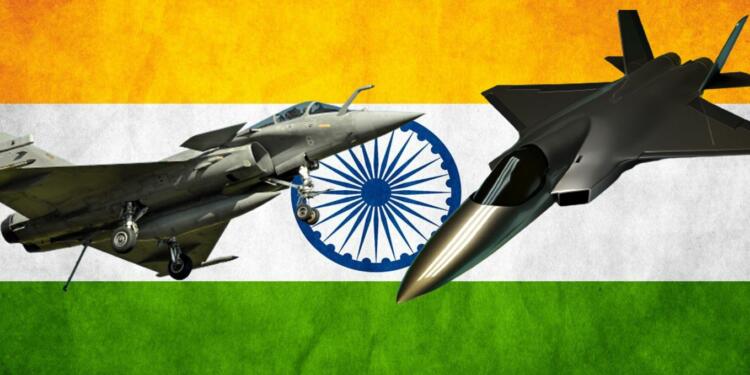In a war, when land routes are unfeasible for the army and water routes are blockages for the Navy then the Air Force will always be ready to ‘touch the sky with glory. Due to the limited scope of operation for the Army in a war, every advanced country is now downsizing their armies and investing more in the Air Forces as the capacity to reach the target in the sky is limitless. Guiding with the contemporary challenges of war, India is also working on the modernization of the Air Force & in a bid to that, vouching for the world’s most advanced Flying Machines for the forces.
Advanced Medium Combat Aircraft (AMCA)
PM Modi was on a 3 days-3 nation visit to Europe & his concluding visit was to France. During the visit, the Ministry of Defense told the officials on the tour “to complete the negotiations with France to co-develop a new fighter jet engine in a month”.
It is important to mention here that India is aggressively pushing for indigenous development of 6th Generation stealth, multi-role, air superiority fighter jets for the Indian Air Force & Navy. With the composite collaboration of the state’s defense giant DRDO (Defense Research & Development Organization ), HAL (Hindustan Aeronautics Limited), and a domestic private company, India is expecting to start the trial of its first indigenous AMCA by 2024-25 & introduction in forces by 2030-35.
Concerning its AMCA project, India needs a new fighter jet engine technology with the powerful thrust of 110-kilo newton (kN) as the indigenously developing Kaveri engines are still in the niche stage and to power the AMCA with the lowered capacity engines will sub-grade expected capabilities of the jets.
Read More: Tata will be developing fighter jets for the Indian Air Force
France to help in the Transfer of engine technology
Under the offset policy of Rafale purchase, France had offered India to help the country in the development of a new fighter jet engine with the transfer of critical engine technology in a collaboration with DRDO & France’s engine manufacturer Safran. It is pertinent to mention that Safran Aircraft Engines has developed the M88 afterburning turbofan engine for the Dassault Rafale fighter which provides up to 75 kN thrust to Rafale and is expected to increase it by 110 kN.
As per India’s offset policy, the offset clause of the Rafale purchase agreement provides that a foreign vendor has to offset 50% of the deal value in India in the form of investment, purchase, or technology transfer.
Following this, some of the offset costs were expected to be invested in the research & development of a new jet engine with the help of France’s Safran Aircraft Engines. But the project is getting delayed due to the differentiated cost value of R&D and due to this, MoD has told the officials to conclude the negotiations on PM Modi’s visit.
Read More: The real reason why French company Naval Group backed out of India’s Submarine project
Made in India Rafale
Today or tomorrow, whenever India will have a war with its hostile neighbor, it will be a two-front war. The nation will have to prepare to fight with both the neighbors simultaneously.
In pursuant to that, the Indian Air Force required about 42-squadron strength of Combat Aircrafts but currently struggling with 18-squadron is a grave concern for the Indian securities. Despite the acquisition of 36 Rafale fighter aircraft, India still needs about 114 MRFA (multi-role fighter aircraft).
Read More: India finally has an answer to the Smith and Wessons, Remingtons, and Berettas of the world
To fulfill the required squadron, India is expecting to indigenously produce the aircraft with the collaboration of local defense companies & foreign aircraft makers. Many other companies like American Lockheed Martin are ready to collaborate with TATA for the indigenous development of its F-21 aircraft. Further, France’s Dassault is also ready to produce the Rafale jets in India in consonance with the Rafale Offset Deal. If the Indian Air Force and Ministry of Defense will give the green signal to jointly develop the Rafale in India, it may be the Made in India Rafal. Also, the high-cost combination of the deal gives a signal of understanding between the Indian & French government concerning R&D for India’s indigenous defense push.































